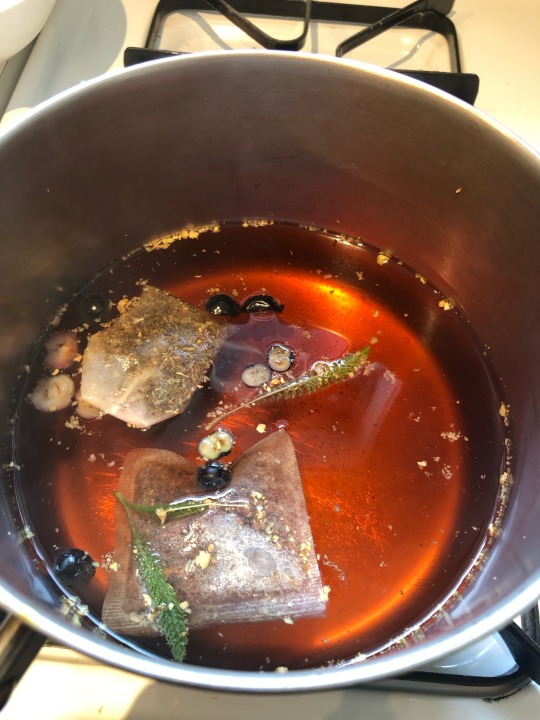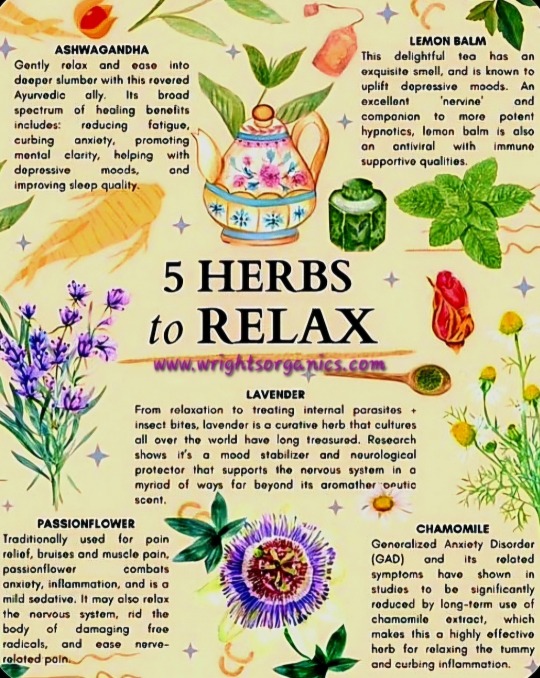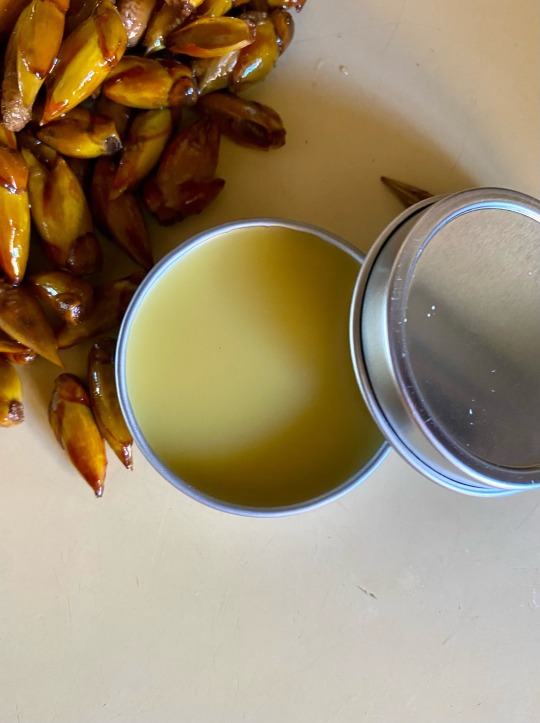#natural herbal remedies
Explore tagged Tumblr posts
Text

The medicine they made you hate and convinced millions of people to spray chemicals to rid it from their lawn. 🤔

#pay attention#educate yourselves#educate yourself#knowledge is power#reeducate yourself#reeducate yourselves#think about it#think for yourselves#think for yourself#do your homework#do your own research#do some research#ask yourself questions#question everything#dandelion#medicine#natural remedies#for your health#stay healthy#healthy living#health tips#herbal remedies#holistic health#holistic healing practices
830 notes
·
View notes
Photo

Looking to find practical, easy home remedies? Stay healthy easier with these methods!
#remedies#at home#at home remedies#easy#easy treatment#herbal#herbs#natural#natural remedies#natural herbal remedies#herbal remedies#medicinal herbs#garden#medicinal garden
0 notes
Text

#tea#herbal tea#herbal remedies#herbal#healing#natural healing#spiritual healing#self healing#healing herbs#herbs and spices#plants and herbs#medicinal herbs#spirituality#spiritualjourney#spiritual#herbs#mental health#healthy#health#self care#self love#witchblr#witch community#wicca#positive energy#energy healing#energy#manifestation#creativity#the universe
343 notes
·
View notes
Text




I want a herbalist cabinet, but kept away from the cat, so I’d want one with a lock. But I don’t think I have room in my tiny apartment. :( could really use natural remedies, or things to prevent illness. I’m always sick.
#herbalism#herbalist#natural herbs#natural remedies#witchy home#witchy aesthetic#witchy vibes#witchy#witch aesthetic#witch vibes#witchcore#witch#green witch#whimsical#whimsigoth#whimsicore#witches#witchcraft#witchblr#witch community#whimsigoth aesthetic#whimsigothcore#whimsigoth vibes#whimsigothic#whimsy aesthetic#whimsy#whimsical aesthetic#whimsical interior#every day magick#magickal living
50 notes
·
View notes
Text
Herbs to Debloat
Bloating is a common issue caused by fluid retention, indigestion, or even stress. Thankfully, nature provides several remedies that can help ease the discomfort. Among the most effective herbs for debloating are dandelion, chamomile, fennel, and ginger. These herbs not only alleviate bloating but also come packed with bioactive compounds that benefit our overall health.
Dandelion (Taraxacum officinale)


Dandelion is often considered a pesky weed, but it’s a powerful natural diuretic that helps reduce water retention and bloating. Dandelion leaves are rich in potassium, a key electrolyte that helps the body regulate fluid balance, preventing excessive water retention. Additionally, dandelion contains bitter compounds known as sesquiterpene lactones, which stimulate bile production and promote digestion, reducing bloating caused by indigestion. It also contains flavonoids and phenolic acids, both known for their antioxidant and anti-inflammatory properties.
How to use it: Dandelion can be consumed as a tea, made from dried leaves or roots, or included fresh in salads. The tea is especially effective for its diuretic properties and digestive support.
Chamomile (Matricaria chamomilla)


Chamomile is famous for its calming effects, but it’s also a powerful herb for digestive issues, including bloating. It contains apigenin, a flavonoid with anti-inflammatory and antispasmodic properties, which helps relax the muscles of the digestive tract. Chamomile also soothes gastrointestinal inflammation and improves the passage of gas, which can ease bloating and cramping.
How to use it: Chamomile tea is the most popular way to consume this herb. Drink a cup after meals to help reduce bloating and calm the digestive system.
Fennel (Foeniculum vulgare)


Fennel seeds have been used for centuries to relieve digestive issues, including bloating. The seeds contain anethole, a compound that has been shown to relax the gastrointestinal muscles, reducing the formation of gas. Fennel also possesses diuretic properties, helping the body eliminate excess fluids, thus combating bloating from water retention. Its essential oils, such as estragole and fenchone, support digestion by stimulating the secretion of digestive juices.
How to use it: Chew fennel seeds after a meal or steep them in hot water to make a soothing tea. This can help with bloating and other digestive discomforts.
Ginger (Zingiber officinale)


Ginger is a well-known anti-inflammatory herb that works wonders for bloating. Its bioactive compound, gingerol, aids digestion by speeding up the movement of food through the gastrointestinal tract, reducing the chance of gas build-up. Ginger also has carminative properties, which help prevent and eliminate gas formation, easing bloating.
How to use it: Ginger tea, made by steeping fresh ginger slices in hot water, is an excellent remedy for bloating. Alternatively, you can add ginger to your meals or chew a small piece of fresh ginger.
[photos from Pinterest]
#it girl#that girl#clean girl#hyper feminine#becoming that girl#glow up tips#healthy girl#pink pilates girl#this is what makes us girls#weight loss#bloated stomach#bloating#healthy diet#healthy food#healthy eating#health and wellness#italian foods#italian food#herbal tea#natural remedies#farm girl#it girls#girlhood#clean girl aesthetic#clean girl moodboard#clean girl era#dream girl tips#girlblog aesthetic#it girl energy#that girl aesthetic
24 notes
·
View notes
Text

Menstrual Cramp Relief Tea 🫖
1 bag of raspberry tea
1 bag of chamomile & lavender tea
6 halved blueberries
A couple sprigs of yarrow
A tbsp Minced ginger root
I put it in about 32 ounces of water and I am drinking the whole thing. I just strain it but you can definitely put the ingredients in a tea bag or ball :)
#holistic#alternative#aesthetic#nature#period cramps#remedies#pagan#goddess#green#tea#green witchcraft#herbal remedies#oc#green witch
235 notes
·
View notes
Text
a green witch’s guide to keeping cool this summer 🧊
if you’re like me and the summer heat feels like hell on earth, you may want to create some cooling brews to keep you calm, cool, and collected this summer
there are a ton of herbs that have been used across cultures to cool down the body during the hot summer months
examples include:
lemongrass 🍋
chrysanthemum 🌸
lavender 🪻
spearmint 🌱
and many more
now be warned, online you may see other herbs like peppermint, chamomile, and lemon balm listed but these act as a diaphoretic, meaning they will induce sweating, and while sweating is the body’s way of cooling down, it is also a sensory nightmare for folks like myself so you may want to avoid these
instead you should give my signature lavender hibiscus lemonade a try 🌺🍋
#bunny speaks#green witch#herbalism#nature#herbal witch#solar witch#kitchen witch recipe#kitchen witch#herbal remedies#herbal witchcraft#cottage witch#natural health#cottage core#garden#summer solstice#witchcraft tips#green witch tip
20 notes
·
View notes
Text
A natural makeup remover for all y’all herbalist an holistic healthy and beauty gurus out there, or just a witch that wants to get to know plants! - Coconut oil, I use the one that you can find in your local grocery store!
Honestly could have it any other way, all natural, you can put your energy into, it’s plant based, no chemicals, and is great with sensitive skin!
#witchblr#witchcraft#witch#baby witch#witch community#witchcraft community#nature#magick#natural remedies#herbal remedies#herbs#oils#coconut oil#nature witch#food is medicine#natural home remedies#home remedies#kitchen magick#kitchen medicine#holistic health#holisticwellness#holistic living#holistic#makeup#makeup remover#natural makeup#natural body#natural makeup remover
10 notes
·
View notes
Text

N e t t l e s
#nature#outdoors#plants#nettles#nettles are so good they deserve some appreciation#violent tendencies aside#you can make drinks with it#which are actually really tasty#you can use it for herbal remedies i think#though don't quote me on that one I'm not paying the insurance on it#do your research#just nettles#very good plant 10/10#garden#because I do have some growing there naturally#we just leave em be they stick to their spot they don't bother anybody else#they're just pretty
8 notes
·
View notes
Text

Illustration of medicinal plants depicting Parsley, Valerian, Foxglove and Crowfoot. The Book of Health: Plate No. 13 - 1898.
#medicinal plants#plants#herb lore#herbology#medicine#vintage illustration#vintage books#natural remedies#raditional medicine#herbal medicine#plant kingdom#medicinal herbs#flowers#leaves#roots#stems#fruits#seeds#agricultural sciences#biological sciences#science#biology#agriculture
9 notes
·
View notes
Text

#herbs#plants#herbal remedies#relaxation#relax#organic farming#all natural#chamomile#lemon balm#passion flower#lavander#ashwagandha#diy ideas#made by me#made for you#made for others#the apothecary diaries#alchemical ascension#alchemy#creative inspiration#inspiration#creativity#self love#love#herb garden#nature#earth#entrepreneur#education#science
7 notes
·
View notes
Text
“Battling COVID symptoms? Try this powerful herbal tea to support your recovery and boost immunity naturally!”
“If Looking for a natural way to support your body during COVID recovery? 🌿 This powerful blend of hibiscus, ginger, mullein, and clove offers a range of healing benefits:
🍃 Hibiscus: Rich in Vitamin C and antioxidants, hibiscus helps strengthen your immune system and fight off inflammation.
🍃 Ginger: A natural anti-inflammatory and antiviral, ginger soothes the throat, eases congestion, and promotes respiratory health.
🍃 Mullein: Known for its lung-cleansing properties, mullein supports healthy breathing and clears mucus from the lungs, making it perfect for respiratory relief.
🍃 Clove: Packed with antimicrobial properties, clove helps fight infections and relieves sore throats, while also boosting overall immunity.
Together, this tea blend provides a soothing remedy for respiratory symptoms, cough, and overall immune support. 🌱 Sip your way to better health! 🤔
#pay attention#educate yourselves#educate yourself#knowledge is power#reeducate yourselves#reeducate yourself#think about it#think for yourselves#think for yourself#do your homework#do your research#do some research#do your own research#ask yourself questions#question everything#for your health#health tips#healthy living#natural remedies#natural medicine#news#herbal medicine
144 notes
·
View notes
Text
Black cottonwood has long been used medically. It’s sap has antiseptic properties that nameless it great in a salve for burns and cuts. Feeling *pretty*accomplished. ☺️

#foraging#natural medicine#herbalism#green witch#cottage witch#cottagecore#crafty#salve#herbal remedies#cottonwood#potions#whatpennymade
9 notes
·
View notes
Text
5 HERBS FOR ENERGY
Uplifting and energising ✨



Ginseng
used to boost energy levels
Maca
can increase energy and stamina
Peppermint
increases brain function and alertness
Ashwagandha
boosts energy levels
can improve focus and stress response
found to increase muscle mass/strength
Cordyceps
reduces fatigue
increases production of energy to cells
boosts immunity
Reminder - these can affect people differently, occasionally negatively, and should be used with caution.
#energy#uplifting#herbs#magical herbs#herbal remedies#herbal medicine#plants and herbs#high energy#natural medicine#natural healing#spirituality#spiritualjourney#natural#healing#dried herbs#healing herbs#witch community#wicca#green witch#kitchen witch#herbal tea#witchblr#focus#stamina#energy levels#boost energy#energy booster#spiritual#spiritualgrowth#beginner witch
279 notes
·
View notes
Text
Remedies for a heartbreak - 1 Hug yourself so tightly that you squeeze the pain out.
#poetry#dark academia#sadgirl#love#heartache#romcom downtown girl#light academia#natural remedies#herbal remedies#heartbreak
4 notes
·
View notes
Note
tips on how to become a herbalist like you 🥺💞 also i really appreciate your blog <3
(AWWW ILY)
Tips for Becoming an Herbalist


Becoming an herbalist is really a rewarding journey, filled with the joy of discovering the healing properties of plants. Here are some essential tips to guide you on this path:
1. Cultivate your passion
The first step to becoming an herbalist is to cultivate a genuine passion for plants and herbal medicine. This enthusiasm will fuel your learning journey and keep you motivated, especially during challenging times.
2. Learn to observe nature
Develop your observational skills by spending time in nature. Pay attention to the plants around you—notice their growth patterns, habitats, and seasonal changes. Gradually learn to recognize local plants, starting with the most common ones, and use field guides to assist you.
3. Start with the basics
Begin your studies with simple plants that are well-known for their medicinal properties. Create a structured approach to your learning by focusing on key botanical aspects, including:
Scientific and Common Names: Familiarize yourself with both names for effective communication.
Morfological Description: Study the physical characteristics of each plant, noting unique features.
Toxic Plants: Be aware of toxic plants in your area and learn to identify them to ensure safety.
Secondary Metabolites: Understand the active compounds in plants and their effects on the human body.
4. Seek out courses
Look for local or online courses that offer training in herbalism. Many institutions provide comprehensive programs that cover everything from plant identification to practical applications of herbal remedies. For instance, I obtained a certification that allows me to work as a phytotherapy practitioner, which has greatly enriched my understanding and skills.
5. Invest in quality literature
If you have the opportunity, invest in reputable books on medicinal plants that have a scientific foundation. Look for texts that cover botany, herbal pharmacology, and traditional uses. These resources will deepen your knowledge and provide valuable references as you continue your studies.
Ps: Be careful to develop a passion for plants; you might find yourself at 2000 meters searching for tiny plants with unpronounceable names. If you find yourself in that situation, you’re on the right track! ;)


[last two are my photos, but i also had to put maomao because she's so me lol]
#that girl#clean girl#hyper feminine#it girl#becoming that girl#healthy girl#glow up tips#pink pilates girl#this is what makes us girls#weight loss#plants#plantblr#herbalmedicine#herbalism#herbalist#herbal tea#herbalremedies#herbs#natural remedies#fitoterapia#farm girl#clean girl aesthetic#clean girl era#clean girl moodboard#dream girl tips#girlblog aesthetic#it girl energy#that girl moodboard#that girl aesthetic#wellness girl
35 notes
·
View notes